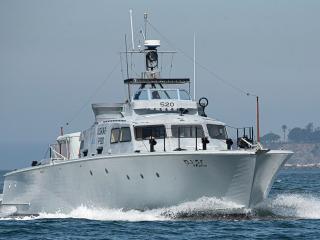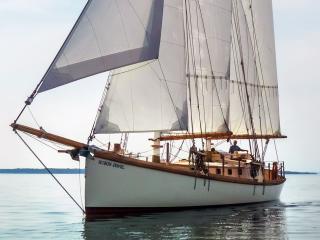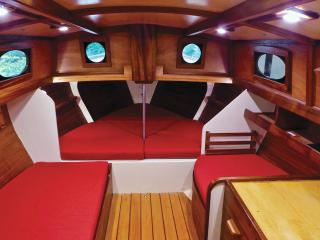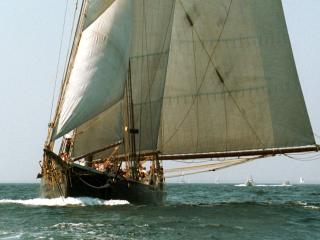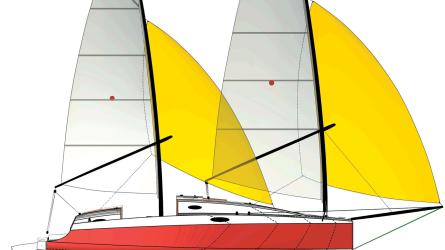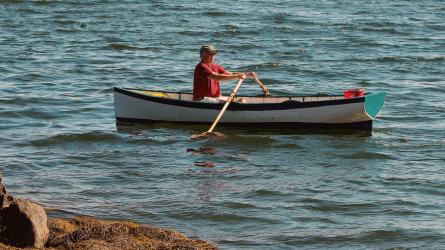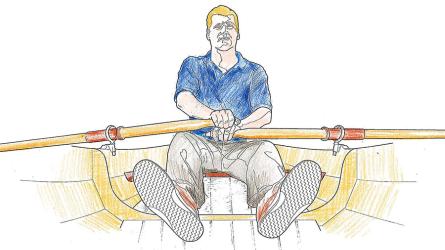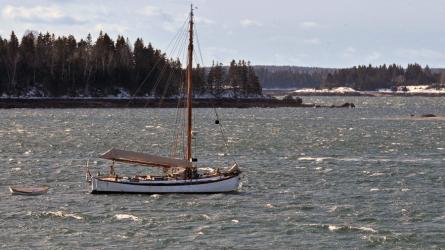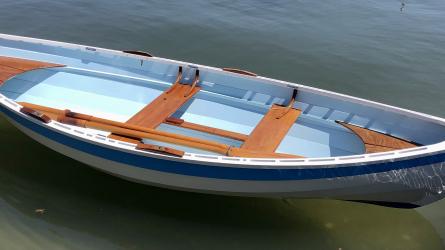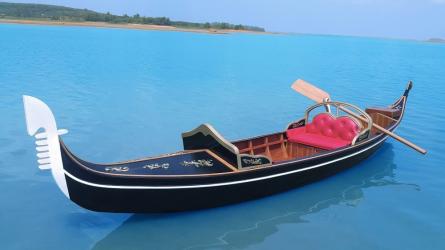November / December 2019
Aboard: LIBELLULE
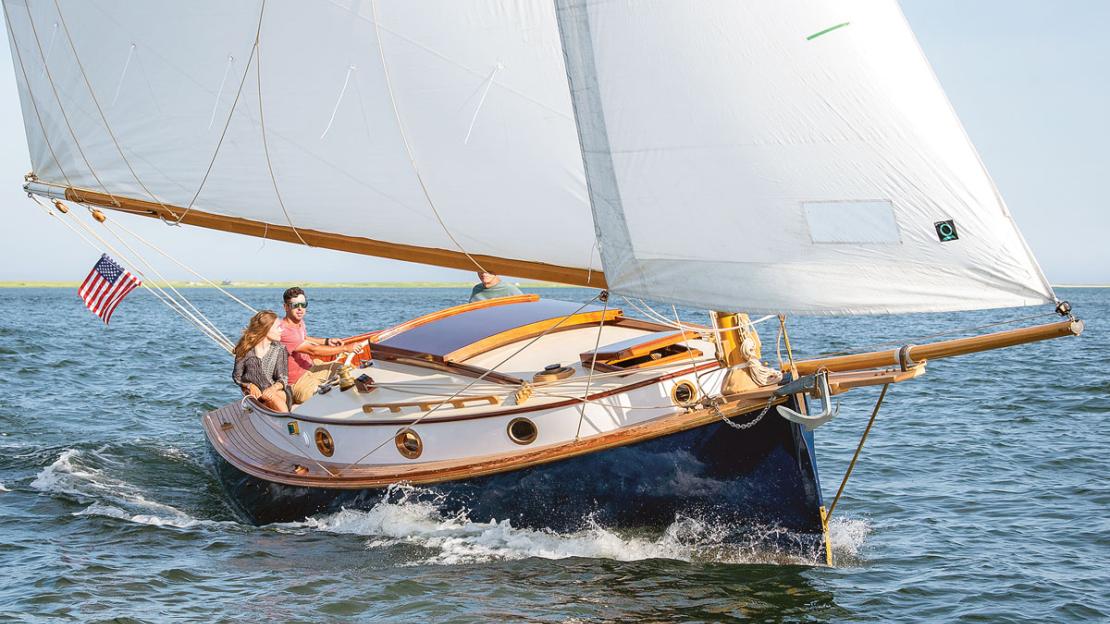
For now, LIBELLULE is the largest catboat Arey’s Pond Boat Yard has built, and she’s the latest addition to a résumé of boats that has shown increases in size with each commission. She carries a sensible combination of modern and traditional details that make her easy to handle and comfortable to cruise aboard despite her diminutive length.
The eastern shores of Cape Cod, Massachusetts, are among the most beautiful waterways in New England, bordered by endless white sand beaches, towering dunes, and low marshes. One could spend a lifetime exploring the bays and coves there without growing restless; however, much of this region is too shallow for even the most modest cruising boat. For this reason, the maritime history of the Cape is built upon the decks of catboats. The widespread use of these wide, shallow-draft, easily handled boats has certainly diminished since their hardworking days as fishing and all-purpose boats for shallow waters, but the appreciation and love of the type has never been lost. In many New England anchorages, chances are good that there will be one or two catboats enjoying the skinny water the rest of us are only able to explore with our jeans rolled up.
Opened in 1954, Arey’s Pond Boat Yard (APBY) is tucked into the upper water of Pleasant Bay in South Orleans near the Cape’s “elbow.” These shallow waters, often measured in inches instead of feet, have easy access to Nantucket Sound and the open Atlantic. The sheltered Arey’s Pond waterfront provides the perfect backdrop for a family-run boatshop specializing in quick, agile daysailers and capable coastal cruisers.
Earlier this summer, the yard celebrated the launching of its largest catboat to date—a 24' custom cat named LIBELLULE (“dragonfly” in French). Designed by company president Tony Davis and Bill Nash, the boat is a beautiful combination of traditional style, modern construction, and an interior customized for a love of cooking. The hull is cold-molded with 3⁄4" western red cedar planks over frames of laminated Douglas-fir. A final longitudinal 1⁄8" layer of western red cedar was vacuum-bagged to the planking and then covered with 10-oz fiberglass cloth set in epoxy, with a second layer of cloth below the waterline. Her teak decks and cockpit sole are laid over marine plywood.
To read the rest of this article:
Click the button below to log into your Digital Issue Access account.
No digital access? Subscribe or upgrade to a WoodenBoat Digital Subscription and finish reading this article as well as every article we have published for the past 50+ years.
ACCESS TO EXPERIENCE
2-for-1 Print & Digital Subscription Offer
For this holiday season, WoodenBoat is offering our best buy one, get one deal ever. Subscribe with a print & digital subscription for $42.95, and we’ll give you a FREE GIFT SUBSCRIPTION to share with someone special.
1 YEAR SUBSCRIPTION (6 ISSUES)
PLUS ACCESS TO MORE THAN 300 DIGITAL BACK ISSUES
PRINT+DIGITAL $42.95
Subscribe
To read articles from previous issues, you can purchase the issue at The WoodenBoat Store link below.
 Purchase this issue from
Purchase this issue from
